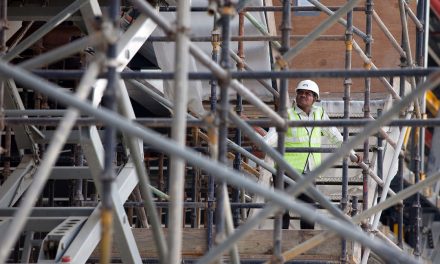The Architecture Billings Index (ABI) was positive in July for the sixth consecutive month, and tenth out of the last twelve months as demand across all project types continued to increase. As a leading economic indicator of construction activity, the ABI reflects the approximate nine- to twelve-month lead time between architecture billings and construction spending. The American Institute of Architects (AIA) reported the July ABI score was 51.5, down from the mark of 52.6 in the previous month. This score still reflects an increase in design services (any score above 50 indicates an increase in billings). The new projects inquiry index was 57.5, down from a reading of 58.6 the previous month.
“The uncertainty surrounding the presidential election is causing some funding decisions regarding larger construction projects to be delayed or put on hold for the time being,” said AIA Chief Economist, Kermit Baker, Hon. AIA, PhD. “It’s likely that these concerns will persist up until the election, and therefore we would expect higher levels of volatility in the design and construction sector in the months ahead.”
Key July ABI highlights:
- Regional averages: South (56.9), Midwest (50.1), Northeast (49.3), West (49.2)
- Sector index breakdown: multi-family residential (55.2), institutional (50.7), mixed practice (50.5), commercial / industrial (50.3)
- Project inquiries index: 57.5
- Design contracts index: 51.8
The regional and sector categories are calculated as a 3-month moving average, whereas the national index, design contracts and inquiries are monthly numbers.
About the AIA Architecture Billings Index
The Architecture Billings Index (ABI), produced by the AIA Economics & Market Research Group, is a leading economic indicator that provides an approximately nine to twelve month glimpse into the future of nonresidential construction spending activity. The diffusion indexes contained in the full report are derived from a monthly “Work-on-the-Boards” survey that is sent to a panel of AIA member-owned firms. Participants are asked whether their billings increased, decreased, or stayed the same in the month that just ended as compared to the prior month, and the results are then compiled into the ABI. These monthly results are also seasonally adjusted to allow for comparison to prior months. The monthly ABI index scores are centered around 50, with scores above 50 indicating an aggregate increase in billings, and scores below 50 indicating a decline. The regional and sector data are formulated using a three-month moving average. More information on the ABI and the analysis of its relationship to construction activity can be found in the recently released White Paper, Designing the Construction Future: Reviewing the Performance and Extending the Applications of the AIA’s Architecture Billings Index on the AIA web site.
About The American Institute of Architects
Founded in 1857, the American Institute of Architects consistently works to create more valuable, healthy, secure, and sustainable buildings, neighborhoods, and communities. Through nearly 300 state and local chapters, the AIA advocates for public policies that promote economic vitality and public wellbeing. Members adhere to a code of ethics and conduct to ensure the highest professional standards. The AIA provides members with tools and resources to assist them in their careers and business as well as engaging civic and government leaders and the public to find solutions to pressing issues facing our communities, institutions, nation and world. Visit www.aia.org.




